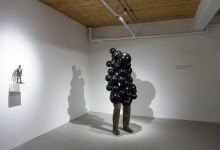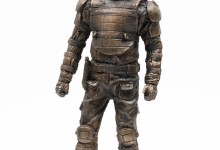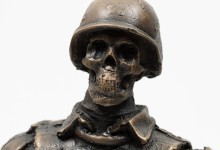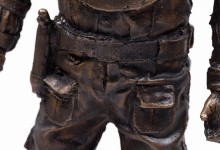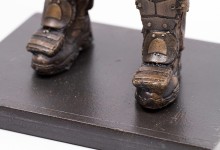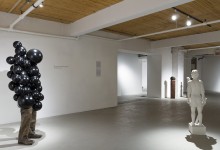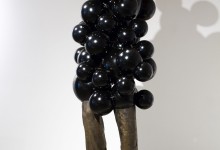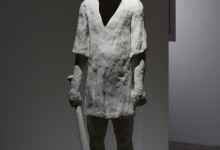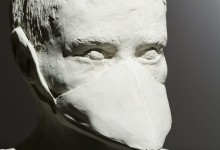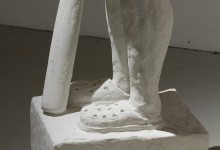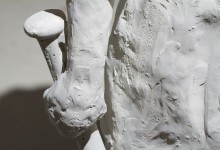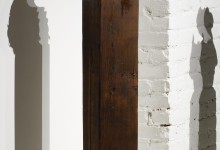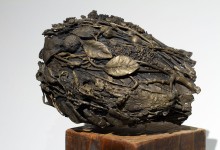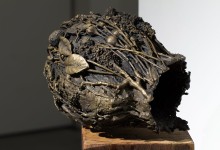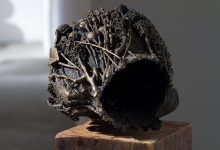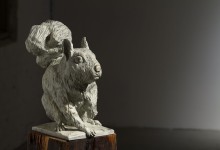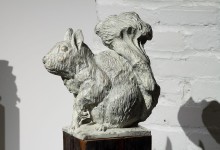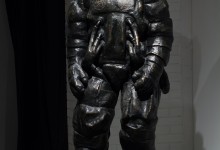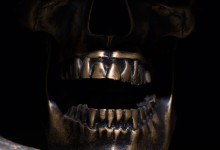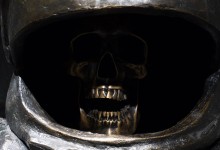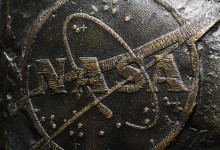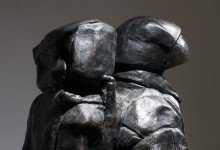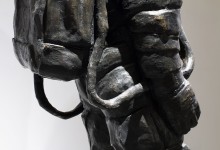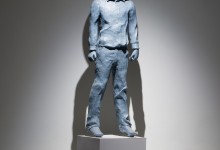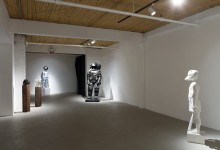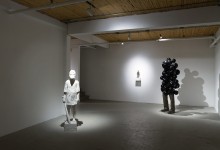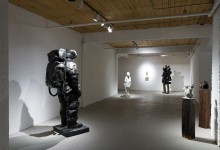Opening reception: Saturday, November 9, 2019 from 3-5 p.m.
Brandon Vickerd: Wrong Place, Wrong Time
Art Mûr Montreal
Text by Geneviève Marcil
Translation by Noémie Chevalier
Brandon Vickerd has in the past explored anthropomorphic hybridity and technological impetus through taxidermy and mechanics. For the Wrong Place, Wrong Time exhibition, the artist revisits these themes, this time focusing bronze casting. Vickerd imagines anachronistic and incongruous juxtapositions of this material, which is reminiscent of both antique statuary and modern public monuments. These associations provoke laughter or discomfort, and they detonate in the space of the gallery as well as in the urban setting in which a large part of Vicker’s production is destined. This is undoubtedly where the contextual and temporal inconsistencies evoked by the title of the exhibition reside.
Inspired by the material tradition of bronze, the artist relies heavily on references to Greek mythology, which he likes to subvert. With Atlas (2019), Vickerd makes a reversal of the famous story of the bearer of the globe. Rather than bravely supporting the weight of the world, the Titan seems assailed by multiple spheres that hide the top of his body, revealing only his distinguished shoes and his dress pants. The sculpture Flora Hominis (2019) illustrates a transitional state between the human and the plant whose detail evokes the metamorphosis of the nymph Daphne into a tree, once immortalized by Bernini. Here the artist presents a fragmentary study of this monument commissioned by the Royal Botanical Gardens of Burlington, Ontario. While the statue aims to honor the founder of this site, the latter is made paradoxically unrecognizable by the vegetation that proliferates on his face. In this way, Vickerd replaces the heroic celebration of his subjects with a partial occultation of their identity.
The sculptor deftly adjusts to classic themes the signifiers of the broken promises of modernist ideology. On the 50th anniversary of the first US moon landing, Oblivion (Dead Astronaut # 2) (2019) takes a harsh look at the conquest of space. The skull bursting from the astronaut’s helmet, along with the US flag emblems and the NASA logo that appear to be fossilized in the surface of the bronze, acts as a memento mori of a nation’s dream of greatness. The ensemble is simultaneously a relic of the Cold War and of the optimism of the last century in terms of technical progress.
Through these games of dissimulation and revelation, the artist exacerbates the formal and the thematic tensions at the heart of his sculptures as much as he makes fun of them. The various social dress code that he puts on stage, from corporate suit and tie to the spacesuit and police riot gear (Riot, 2019), suggest the symbolic power associated with these archetypes while signaling their inevitable demise. As such, Vickerd gravitates somewhere between Ovide and Kubrick in his critical exploration of the past and his lucid anticipation of the future.


